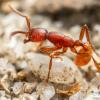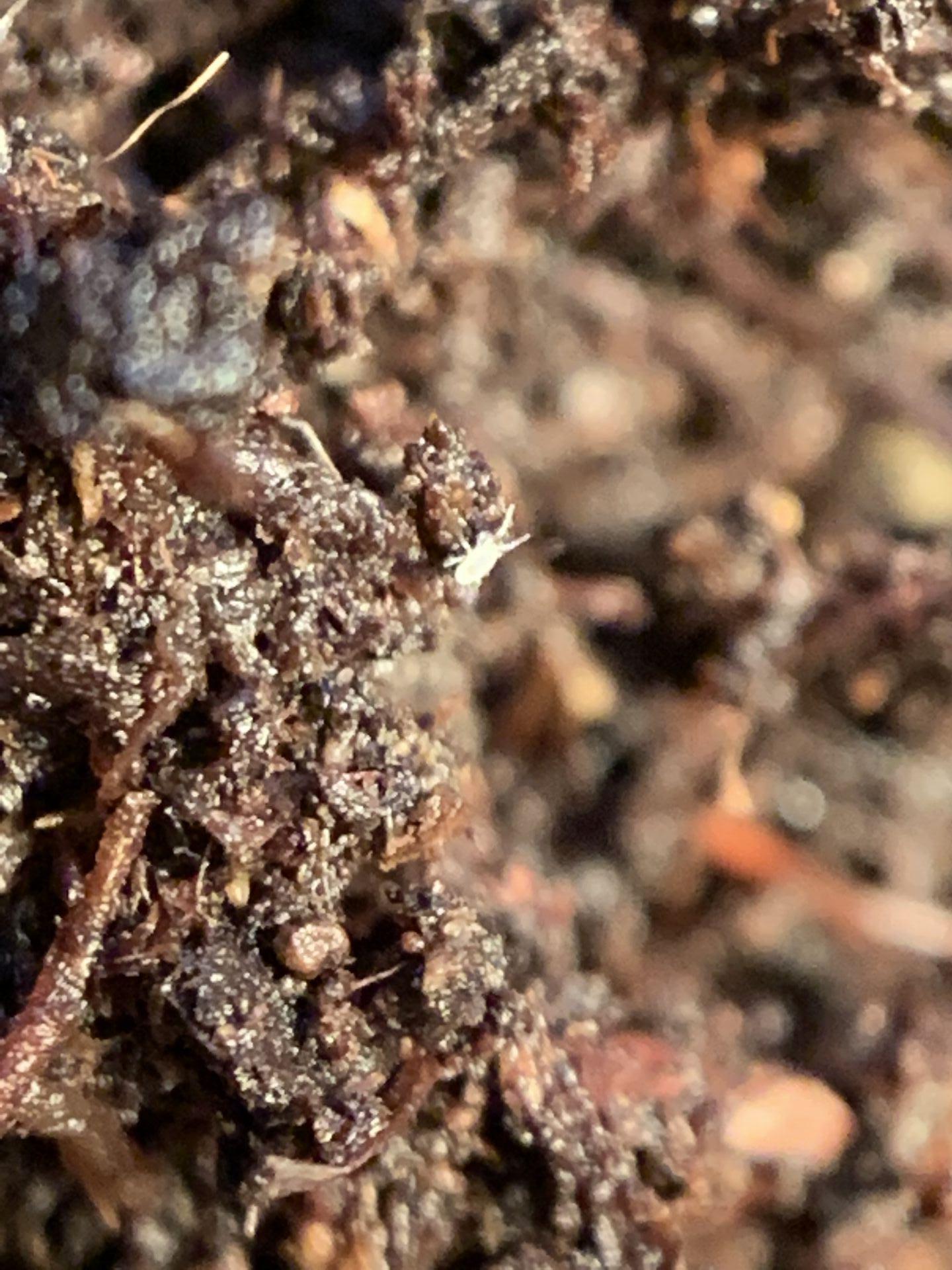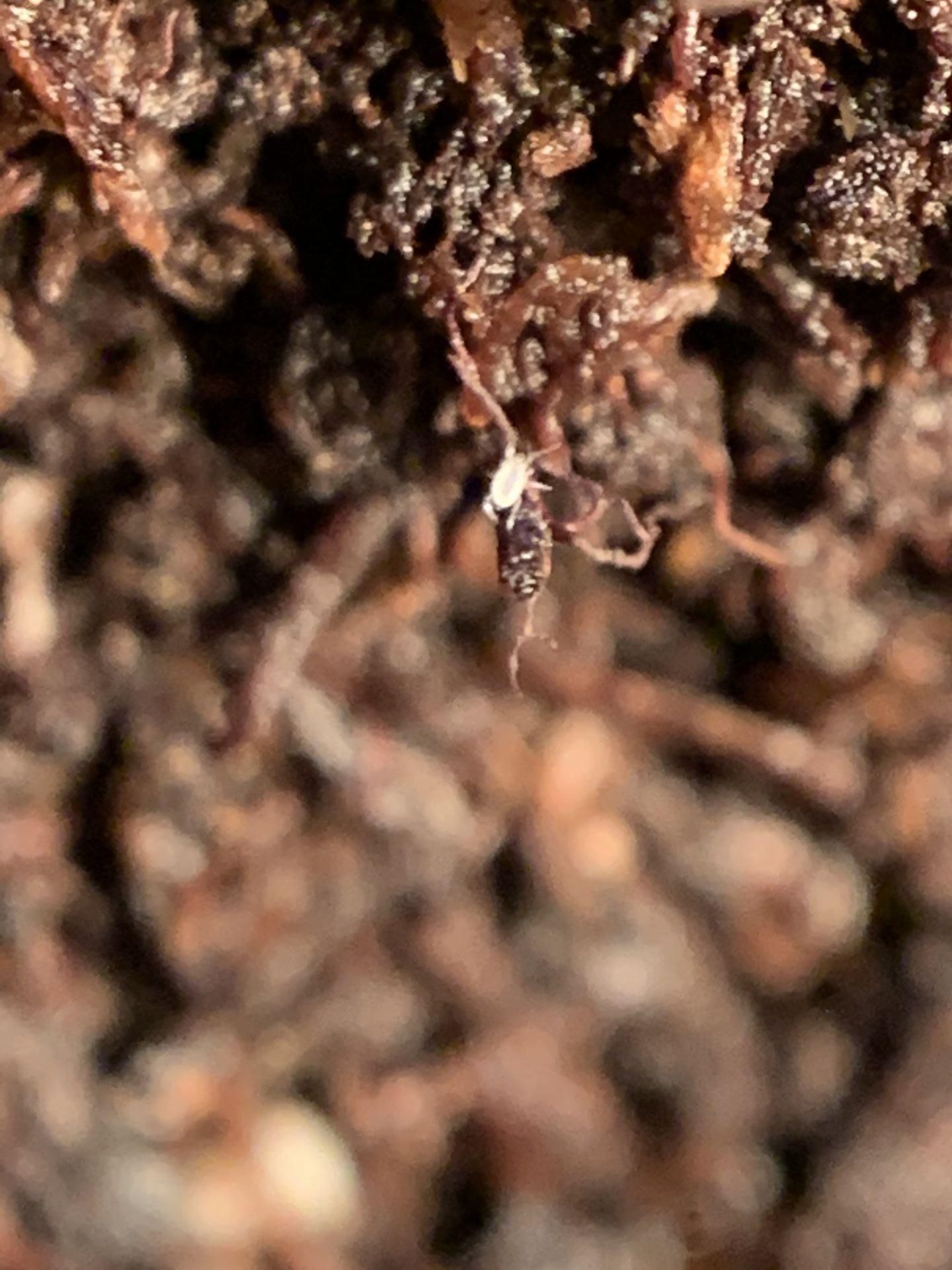I see no reason at least a partial substrate change would be harmful. Removal of the older substrate should help prevent the build up harmful pathogens and parasites.
I will start doing this.

I see no reason at least a partial substrate change would be harmful. Removal of the older substrate should help prevent the build up harmful pathogens and parasites.
I will start doing this.
Bit of a stretch but creating a realistic environment consisting of a variety of local soil microfauna may help immesnly. Of course that would require diligent sifting and sorting so its a bit of a hassle but in theory it will prevent any one animal (mites, nematodes, etc) from becoming too dominat and reproducing exponentially.
Bit of a stretch but creating a realistic environment consisting of a variety of local soil microfauna may help immesnly. Of course that would require diligent sifting and sorting so its a bit of a hassle but in theory it will prevent any one animal (mites, nematodes, etc) from becoming too dominat and reproducing exponentially.
Thank you for that suggestion.
I would Think cleaning the containers would help too. Like I mentioned previously. I mean if They like to move around naturally, then cleaning a previous Nest site might trick Them into returning for reuse. Then You could cycle the containers. When They leave for another one, remove the old one, clean, then return. Gives Them the feeling of more unexplored territory.
Just food for though
I am going to clean three containers tomorrow, the container with the colony is quarantined and I have already added predatory mites. We will see now.
Here are two pics of Stratiolaelaps scimitus the predatory mite I am fingers-crossed-pinch-of-salt-over-shoulder hopeful will assist in the mite issue. They arrived yesterday at 12500 count in the container. I ordered from ARBICO Organics in Tucson. With the colony quarantined in Container A, all other containers disconnected and today they will be cleaned, media sterilized and reset. I placed approximately 1/2 of the arrived mites into the container since they came in a vermiculite substrate I sprinkled it on the whole surface area of the container.


Edited by PurdueEntomology, May 29 2020 - 3:53 AM.
Going into to see Dr. Ernest Bernard (https://epp.tennesse...nest-c-bernard/) with a sample of live ants at 10am. He is going to look at the mites and hopefully confirm that they are parasitic or phoretic. I am on the parasitic side of the fence. Will have an update. I also wanted to thank all of you who are taking interest in this venture and are supportive.
So here are the same image at different brightness. Dr. Bernard believes they are phoretic. I am to take a few more live ants in , he is going to take live mites and culture them the way he does for phoretic mites on millipedes and see what they are. There was a second small mite which he is going to look into also.


Edited by PurdueEntomology, May 29 2020 - 8:13 AM.
I communicated with the company from which I purchased the predatory mites inquiring as to the mites viability upon receipt, they informed me 18hours, at that I placed the rest of the mites into Container A. I sanitized and reapplied Fluon™ to the remaining containers. I heat sanitized all the soil at 250F for a minimum of 30 minutes and tested the internal temperature to ensure each batch reached over 200F. I also heat sanitized all the clay pottery shards and clay reptile fake bark. The remaining containers were set up afterwards and reconnected with sanitized tubing. I have not reconnected Container A though to them.
Just to be clear, you seem to think a keystone species is a species hugely important to the environment, as far as I am aware this is not true. A keystone species is an animal whose population and overall health reflects the health of the environment it lives in. While Neivamyrmex may not be hugely important to the environment, an environment with Neivamyrmex in it is almost guaranteed to be a healthy place in order to be able to support the sheer amount of food intake these ants can have. Keystone species do not have to play a major role, but simply are very sensitive animals reliant on a specific environment.
From My personal experience Here where I Live They do not appear to be a Keystone Species. Not to say They aren't Important. My experience seems to show that They are more or less like Tapinoma sessile. Nomadic and numerous. But There presence seems inconsequential to The areas they roam through. Again. This is not a fact. Just based on My experience with Them
From My personal experience Here where I Live They do not appear to be a Keystone Species. Not to say They aren't Important. My experience seems to show that They are more or less like Tapinoma sessile. Nomadic and numerous. But There presence seems inconsequential to The areas they roam through. Again. This is not a fact. Just based on My experience with Them
"A species whose importance to community and ecosystem structure, composition and function is disproportionally large relative to its abundance". (https://web.utk.edu/...z Dimarco.pdf).The keystone species must be able to demonstrate a disproportionate effect on its environment for example when it is removed. To be honest I am not aware of any scientific work to demonstrate that Neivamyrmex opacithorax, nigrescens or carolinensis meet the varied and often times blurred definitions of a keystone species, the best being that which I cited. For example much field research has shown that Eciton burchellii is by all accounts a keystone species and if it was removed then a dramatic shift in the local ecology of where it lives would be affected, but like I said this has not been TO ME via scientific data been demonstrated with our three eastern Neivamyrmex species.
Just to be clear, you seem to think a keystone species is a species hugely important to the environment, as far as I am aware this is not true. A keystone species is an animal whose population and overall health reflects the health of the environment it lives in. While Neivamyrmex may not be hugely important to the environment, an environment with Neivamyrmex in it is almost guaranteed to be a healthy place in order to be able to support the sheer amount of food intake these ants can have. Keystone species do not have to play a major role, but simply are very sensitive animals reliant on a specific environment.From My personal experience Here where I Live They do not appear to be a Keystone Species. Not to say They aren't Important. My experience seems to show that They are more or less like Tapinoma sessile. Nomadic and numerous. But There presence seems inconsequential to The areas they roam through. Again. This is not a fact. Just based on My experience with Them
From My personal experience Here where I Live They do not appear to be a Keystone Species. Not to say They aren't Important. My experience seems to show that They are more or less like Tapinoma sessile. Nomadic and numerous. But There presence seems inconsequential to The areas they roam through. Again. This is not a fact. Just based on My experience with Them
"A species whose importance to community and ecosystem structure, composition and function is disproportionally large relative to its abundance". (https://web.utk.edu/...z Dimarco.pdf).The keystone species must be able to demonstrate a disproportionate effect on its environment for example when it is removed. To be honest I am not aware of any scientific work to demonstrate that Neivamyrmex opacithorax, nigrescens or carolinensis meet the varied and often times blurred definitions of a keystone species, the best being that which I cited. For example much field research has shown that Eciton burchellii is by all accounts a keystone species and if it was removed then a dramatic shift in the local ecology of where it lives would be affected, but like I said this has not been TO ME via scientific data been demonstrated with our three eastern Neivamyrmex species.
I'm just reading along here out of interest but could an example of a keystone species be the wolves of Yosemite? Relatively small in numbers buy having a huge impact when removed. Sorry to just jump in here. Just interested in what you're saying.
Thanks for the journal and discussion.
I suppose for me to answer that I would have to see the effects of when wolves were largely diminished or actually extinct in previous ranges then reintroduced. https://www.yellowst...-reintroduction.
I suppose for me to answer that I would have to see the effects of when wolves were largely diminished or actually extinct in previous ranges then reintroduced. https://www.yellowst...-reintroduction.
I'm just reading along here out of interest but could an example of a keystone species be the wolves of Yosemite? Relatively small in numbers buy having a huge impact when removed. Sorry to just jump in here. Just interested in what you're saying.Just to be clear, you seem to think a keystone species is a species hugely important to the environment, as far as I am aware this is not true. A keystone species is an animal whose population and overall health reflects the health of the environment it lives in. While Neivamyrmex may not be hugely important to the environment, an environment with Neivamyrmex in it is almost guaranteed to be a healthy place in order to be able to support the sheer amount of food intake these ants can have. Keystone species do not have to play a major role, but simply are very sensitive animals reliant on a specific environment.From My personal experience Here where I Live They do not appear to be a Keystone Species. Not to say They aren't Important. My experience seems to show that They are more or less like Tapinoma sessile. Nomadic and numerous. But There presence seems inconsequential to The areas they roam through. Again. This is not a fact. Just based on My experience with Them
From My personal experience Here where I Live They do not appear to be a Keystone Species. Not to say They aren't Important. My experience seems to show that They are more or less like Tapinoma sessile. Nomadic and numerous. But There presence seems inconsequential to The areas they roam through. Again. This is not a fact. Just based on My experience with Them
"A species whose importance to community and ecosystem structure, composition and function is disproportionally large relative to its abundance". (https://web.utk.edu/...z Dimarco.pdf).The keystone species must be able to demonstrate a disproportionate effect on its environment for example when it is removed. To be honest I am not aware of any scientific work to demonstrate that Neivamyrmex opacithorax, nigrescens or carolinensis meet the varied and often times blurred definitions of a keystone species, the best being that which I cited. For example much field research has shown that Eciton burchellii is by all accounts a keystone species and if it was removed then a dramatic shift in the local ecology of where it lives would be affected, but like I said this has not been TO ME via scientific data been demonstrated with our three eastern Neivamyrmex species.
Thanks for the journal and discussion.
I was just speaking as per the definition "must be able to demonstrate"...."Disproportionate effect"...."removed". So if we have some data of the state of the Yellowstone/Western region whilst wolves were present, then data on environment/biologies/ecologies when they were absent then changes that are "proportionate" when reintroduced we could say wolves are most like keystone or not. So after writing the aforementioned I quickly Googled and found this: https://www.national...cies-ecosystem/. So this will answer your question.
From Dr. Bernard:
Gary, your ants have two different species of mites on them. Both of the forms are the hypopus stage. I've mounted some on permanent slides and the ventral suckers are quite obvious. If I get a few live ants next week I'll culture the mites.
--end email. ![]() (ie they are phoretic so far and NOT ectoparasitic to our current knowledge)
(ie they are phoretic so far and NOT ectoparasitic to our current knowledge)
The larvae are beginning to pupate!! Also, the aggressiveness shown recently at brood-food offering is diminishing, which is understandable as the need and "incitement" to gather food for larvae is lessening. I have been out for 12 hours today collecting Tapinoma sessile from certain select areas of East Tennessee and will continue tomorrow morning bright and early. ![]()
Edited by ANTdrew, May 30 2020 - 6:31 PM.
Great news about the mites.
Wolves had a tremendous impact on Yellowstone by limiting white tailed deer populations. This in turn allowed native vegetation to rebound, helping all sorts of herbivores. Native trees along stream banks filtered watered again, vastly improving water quality for aquatic creatures. They are definitely keystone species.
Yes, I have posted a link in the above thread as a result of my looking into the question.
0 members, 1 guests, 0 anonymous users